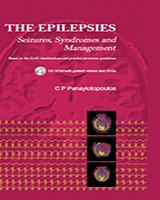From: Chapter 10, Idiopathic Generalised Epilepsies

The Epilepsies: Seizures, Syndromes and Management.
Panayiotopoulos CP.
Oxfordshire (UK): Bladon Medical Publishing; 2005.
Copyright © 2005, Bladon Medical Publishing, an imprint of Springer Science+Business Media.
NCBI Bookshelf. A service of the National Library of Medicine, National Institutes of Health.